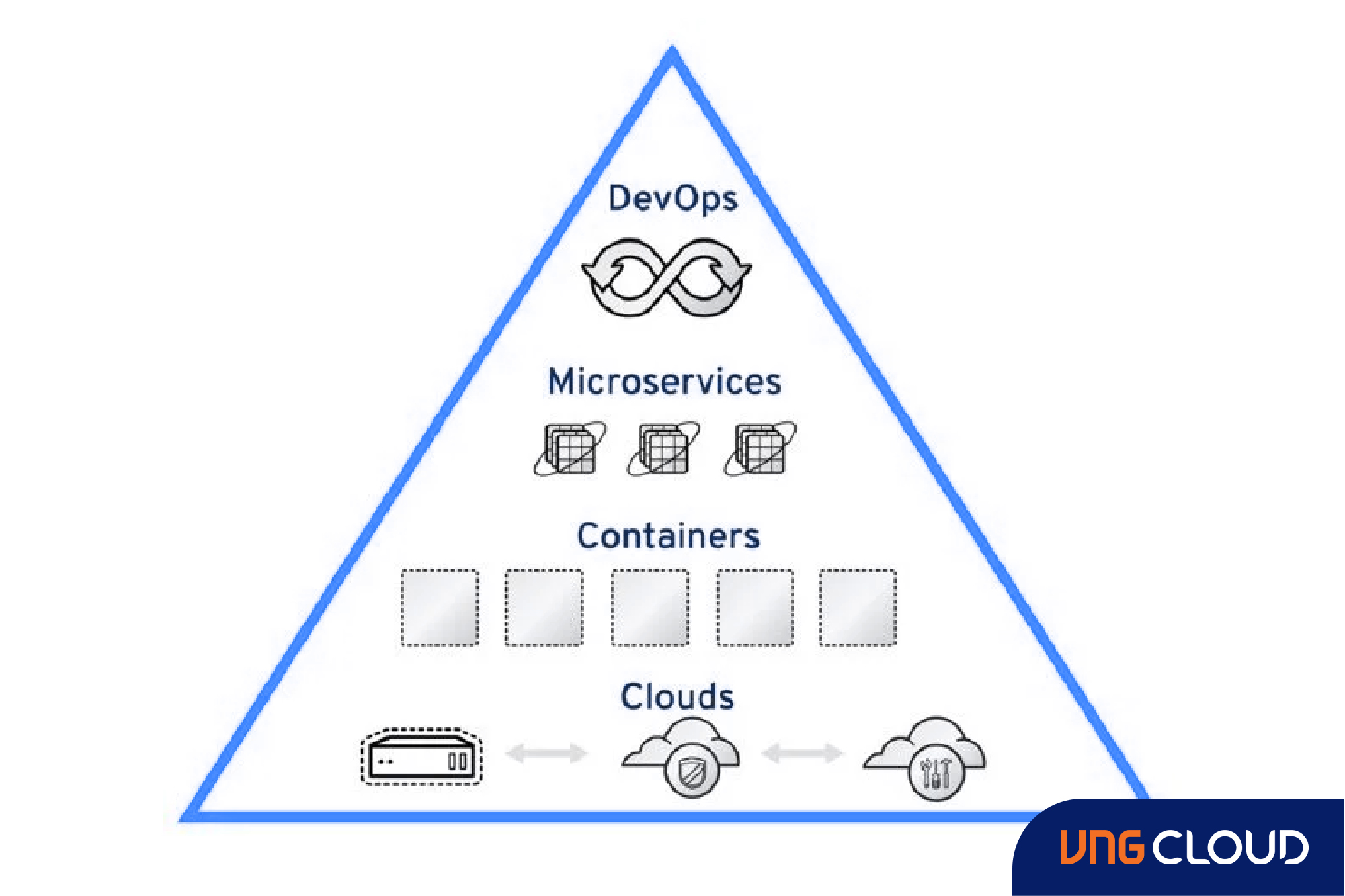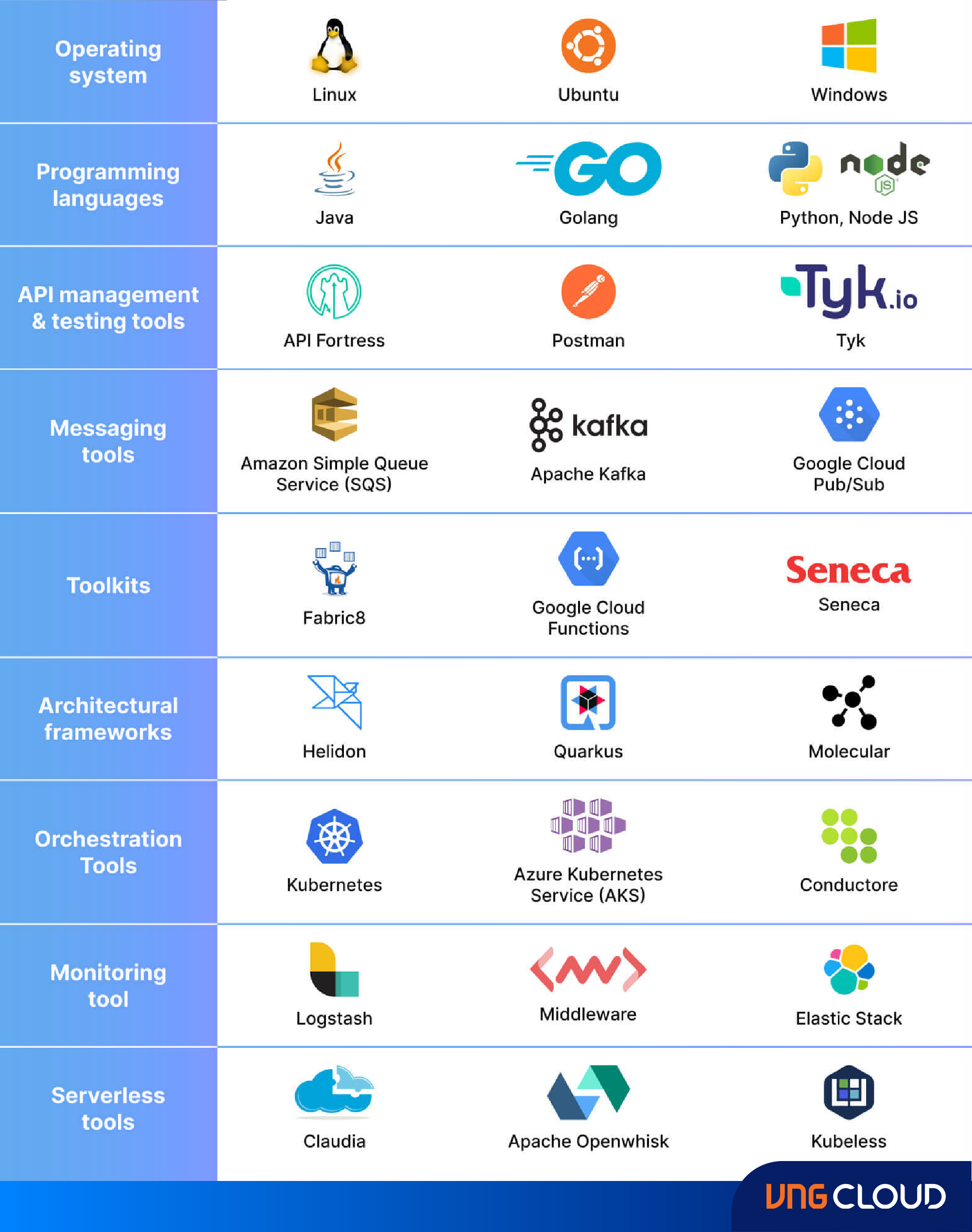While microservices and DevOps are distinct concepts with independent functionalities, they often converge due to their inherent synergy.
DevOps orchestrates collaboration between development and operations teams, facilitating streamlined communication and integration. This collaborative approach enhances the management of infrastructure, encompassing deployment, capacity planning, scaling, upgrades, and operational tasks. Developers and application teams assume responsibility for various facets of production, including databases, servers, and software.
Microservices, on the other hand, offer a contemporary approach to software design, emphasizing the creation, deployment, monitoring, and management of numerous individual components constituting a larger application. Given that DevOps and Agile methodologies commonly underpin software development processes, the multifaceted nature of microservices aligns naturally with DevOps practices. Moreover, the lifecycle management of microservices necessitates teamwork and collaboration between development and operations teams, mirroring the collaborative ethos of DevOps.

Experienced DevOps teams possess the adeptness to incorporate microservices architectures seamlessly into software development endeavors, leveraging their collaborative frameworks and operational efficiencies. This confluence underscores the symbiotic relationship between microservices and DevOps, enhancing the agility and effectiveness of modern software development projects.
Considerations for Successful Transition to Microservices
Transitioning to microservices architecture often requires a departure from legacy design patterns, demanding architects and developers to embrace new design principles and patterns. Key considerations include database access, networking implications, and efficient messaging between services, all of which require time and expertise to implement effectively.
Design Principles:
- High Cohesion: Services should collaborate minimally to optimize network bandwidth usage.
- Low Coupling: Minimize interdependencies between services to enhance resilience and facilitate reusable module design.
- Single Responsibility Scope: Define clear boundaries for each service to focus on specific business requirements, promoting component reusability.
- Reliability: Design services with maximum fault tolerance to prevent a single service failure from affecting the entire application.
- Data Separation: Avoid shared storage or data dependencies; each service should have access to its own database or storage volume.
- Automation: Utilize automation tools like Kubernetes for efficient deployment and management of microservices components.
- API Usage: Emphasize good API design and management to facilitate interaction and communication between services.
- Monitoring: Implement monitoring tools to oversee service health, performance, and traffic management for optimal service performance.
Behavioral Patterns:
- Discovery Design: Employ client- or server-side discovery mechanisms to locate and access available services.
- Registration Design: Implement self-registration or third-party registration to track service availability.
- Flow Design: Define workflow patterns between front-end UI and back-end data using established design patterns.
- Saga Design: Employ process instructions to ensure orderly messaging and reliable recovery.
- Reliability Design: Enable multiple call attempts or implement circuit breaker patterns to prevent cascading errors.
- Transitional Design: Refactor monolithic applications into microservices using strategies like the strangler design pattern to segment legacy applications and create decoupled modules.
Database Implications:
- Single Database per Service: Assign only one database per service to support consistency and scalability.
- Shared Database: Use caution when multiple services share a database to mitigate concurrency conflicts.
- Saga Design: Implement transaction and confirmation mechanisms to facilitate error recovery.
- Event-Based Design: Utilize static databases to capture and store records of event-based transactions.
Messaging Patterns:
- Loose vs. Tight Coupling: Balance dependencies with communication frequency; loosely coupled services require more messaging but reduce dependencies.
- Asynchronous vs. Synchronous Communication: Consider one-to-many communication channels for efficient messaging in complex microservices applications.
- Message Brokers: Leverage lightweight message brokers to handle messaging without waiting for responses, enhancing efficiency in microservices architectures. Choose from various messaging tools and platforms based on project requirements.

Steps for Successful Microservices Deployment
Deploying microservices requires careful planning and execution to harness the benefits of this architectural approach effectively. While there's no one-size-fits-all deployment plan, following these key steps can help streamline the deployment process and mitigate common pitfalls:
- Use the Cloud: Leverage the scalability and on-demand resources of the public cloud for container-based microservices deployments. While traditional data centers can suffice for limited deployments, the cloud offers native orchestration services and cost-effective infrastructure for microservices.
- Prioritize Resilience: Design microservices as stateless entities capable of being stopped, restarted, patched, and scaled without disrupting other services or the application. Minimize dependencies between services to prevent turning a microservices architecture into a distributed monolithic one.
- Decentralize Data Access: Ensure each service accesses its own data resources to maintain data consistency and prevent conflicts. Adopt suitable database designs for individual tasks, allowing changes to one database or data store without impacting other services.
- Break Down Silos: Organize cross-functional teams around microservices applications to foster collaboration and agility. Embrace flexible and supportive cultures like DevOps to swiftly address and resolve issues.
- Automate Deployment: Implement automation frameworks to streamline the deployment process, enabling efficient release of new services to production and rapid troubleshooting and fixing of issues.
- Implement Monitoring: Use monitoring tools tailored for dynamic component environments to track the health and performance of each service. Ensure deployment automation integrates with monitoring, logging, and reporting tools for comprehensive visibility.
- Centralize Log Management: Store logs centrally in persistent storage to prevent data loss and facilitate comprehensive analysis. Consider log analytics tools to gain insights into microservices activity and troubleshoot issues effectively.
- Prioritize Security: Address security concerns proactively by implementing multiple layers of security measures. Encrypt data, secure APIs with proper authentication and authorization, and foster collaboration between development, operations, and security teams (DevSecOps).
- Enhance Testing: Adapt testing strategies to suit the complexity of microservices architectures. Test services individually, simulate dependencies, and employ contract testing to ensure API usage aligns with expectations. Prepare robust testing and rollback plans to mitigate risks effectively.
- Adopt Versioning Techniques: Implement version control to manage the diverse array of services in a microservices ecosystem effectively. Use versioning approaches such as URI versioning, header versioning, semantic versioning, or calendar versioning to manage service dependencies and updates efficiently.
By following these steps, organizations can navigate the challenges of microservices deployment and build scalable, resilient, and efficient software systems.
Tools for Deploying and Managing Microservices
With the integration of APIs, containers, and CI/CD practices, microservices benefit from a wide array of tools for their design, testing, deployment, and management.

Kubernetes stands out as the predominant choice for orchestrating container-based environments, whether implemented locally within an enterprise or through a cloud-based service. Alternative orchestration tools like Docker Swarm, Compose, and HashiCorp Nomad also offer viable options.

In addition to orchestration, organizations can select from various tools covering testing, deployment, monitoring, and management of microservices environments. For testing, examples include Gatling, Hoverfly, Jaeger, Pact, Vagrant, VCR, and WireMock. API management tools such as API Fortress, Postman, and Tyk facilitate API governance. Architectural frameworks like Goa and Kong are well-suited for microservices and REST API development.
Monitoring and managing microservices pose unique challenges due to the distributed nature of the architecture. Tools focused on observability, failure detection, and metrics gathering from logs are crucial. Monitoring tools like Sentry, Sensu, and Sumo Logic provide insights, while log aggregation tools such as Fluentd, Logstash, Ryslog, and Loggly streamline log management. For log visualization, options like Scalyr, Graylog, Kibana, and Sematext are available.
A service mesh layer, exemplified by solutions like Linkerd and Istio, facilitates communication between individual services in complex microservices environments. It enhances communication speed, security, visibility, and reliability by implementing features like latency-aware load balancing and service discovery. Prominent cloud providers provide extra services specifically designed for managing microservices.
Advancements in these technologies, coupled with sophisticated monitoring and logging capabilities, have mitigated microservices complexity, driving widespread adoption among organizations and development teams.
With VNG Cloud, businesses enjoy unparalleled flexibility in customizing their technology stack to precisely match their system requirements and financial considerations. For further details regarding the extensive range of services offered within the VNG Cloud ecosystem, we invite you to contact us via our dedicated Hotline 19001549.